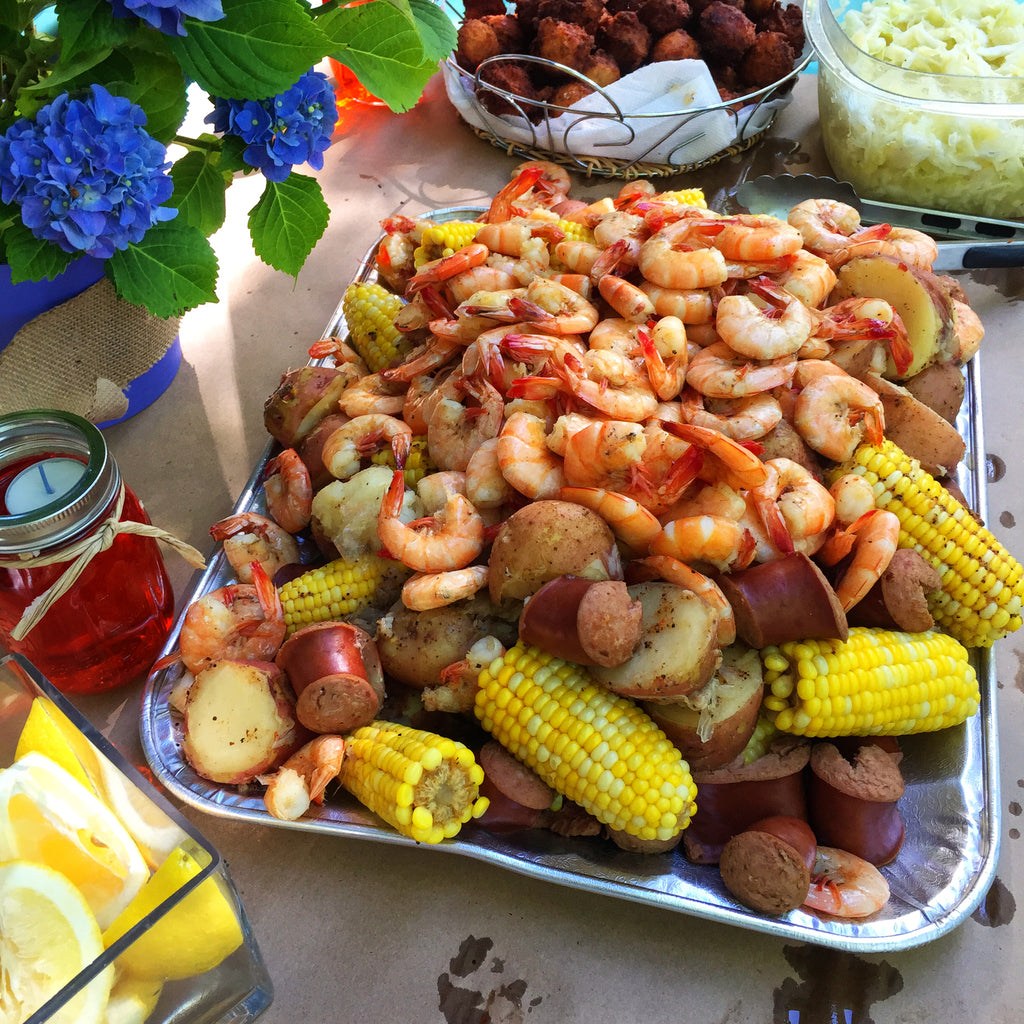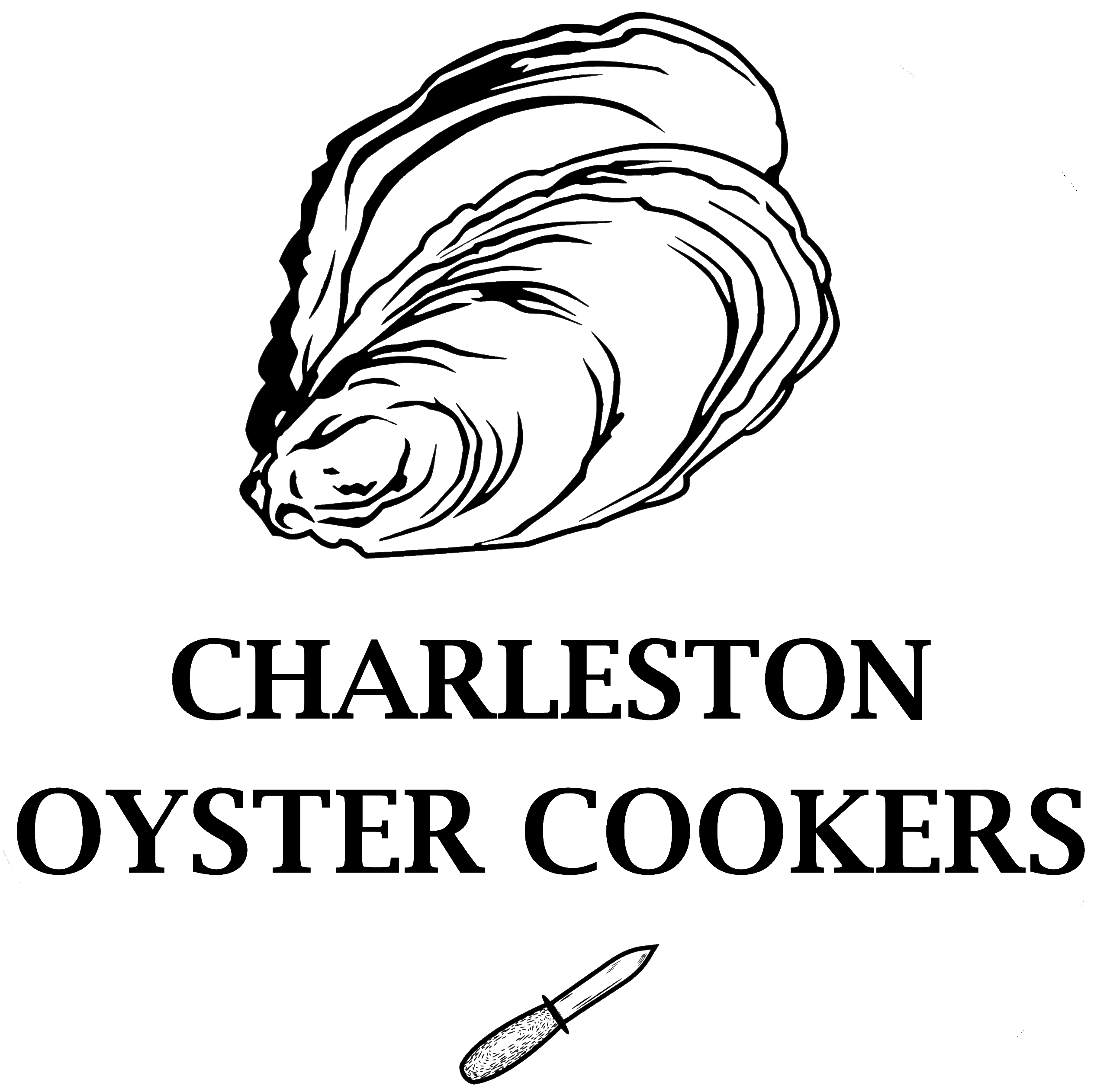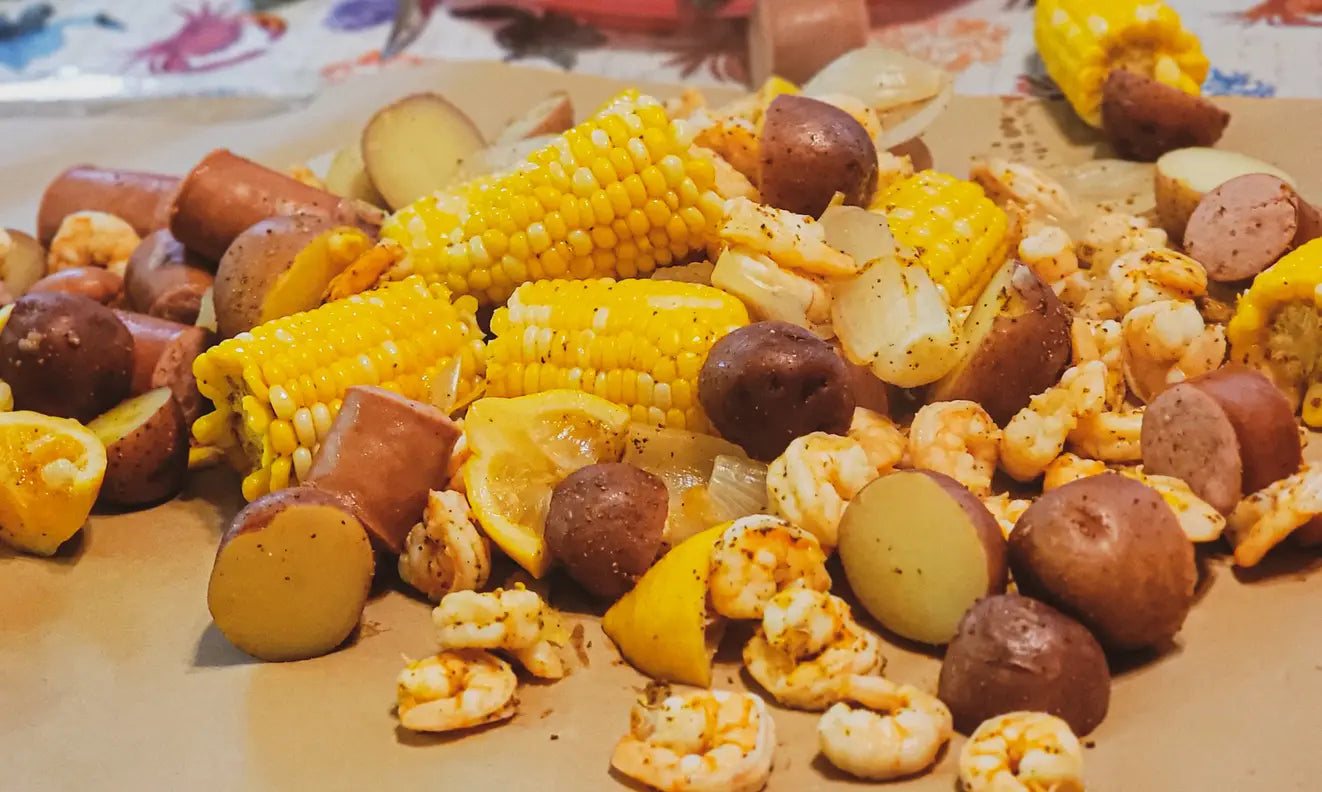
Lowcountry Boil Recipes for Outdoor Gatherings
What is a Lowcountry Boil?
A Lowcountry boil is a quintessential Southern dish that combines fresh seafood, hearty vegetables, and bold seasonings into a one-pot wonder. Originating from the coastal regions of South Carolina and Georgia, this communal meal is deeply rooted in the traditions of the Lowcountry, a geographic and cultural area known for its rich culinary heritage. The dish was historically prepared by fishermen who would cook their daily catch alongside simple, readily available ingredients like corn and potatoes. Over time, it evolved into a beloved staple for outdoor gatherings, family reunions, and casual celebrations.
The defining ingredients of a Lowcountry boil include shrimp, corn on the cob, red potatoes, and sausage, all seasoned with a blend of spices like Old Bay or Cajun seasoning. The beauty of this dish lies in its simplicity and adaptability; it can be customized to include local seafood, additional vegetables, or even creative twists. Served directly on a table covered with newspaper or butcher paper, the boil encourages communal dining, where guests dig in with their hands and enjoy the flavors together. Its casual, interactive nature makes it perfect for outdoor gatherings, fostering a sense of connection and camaraderie.
Essential Ingredients for the Perfect Lowcountry Boil
Seafood Selection
The star of any Lowcountry boil is the seafood. Shrimp is the most common choice, prized for its sweet, tender flavor and quick cooking time. Depending on your location and budget, you can also include crab legs, crawfish, or mussels to elevate the dish. If you're near the coast, sourcing fresh, local seafood will enhance the flavor and authenticity of your boil. For inland gatherings, frozen seafood can be a convenient alternative—just ensure it's properly thawed and cleaned before cooking.
Vegetables
Vegetables play a supporting role, adding texture and balance to the dish. Corn on the cob, cut into smaller sections, provides sweetness and crunch, while red potatoes offer a hearty, starchy element. Onions are often added for their subtle flavor, and some cooks like to include mushrooms for an earthy twist. The vegetables absorb the seasoning during cooking, making them just as flavorful as the seafood.
Seasonings
Seasoning is the soul of a Lowcountry boil. Old Bay seasoning is a classic choice, with its blend of celery salt, paprika, and spices. Cajun seasoning can be used for a spicier kick, and some cooks prefer to add garlic, lemon slices, or bay leaves for extra depth. The seasoning mix is typically added to the boiling water, infusing every ingredient with bold, aromatic flavors.
Optional Add-Ins
While the traditional recipe is simple, optional add-ins can make your boil unique. Sliced smoked sausage, such as andouille or kielbasa, adds a savory, meaty element. Some cooks experiment with creative additions like artichokes, green beans, or even chunks of pineapple for a sweet contrast. The possibilities are endless, allowing you to tailor the dish to your preferences.
Equipment and Tools You’ll Need
Preparing a Lowcountry boil requires a few essential tools to ensure success. The centerpiece of your setup is a large stockpot, ideally with a capacity of 20-40 quarts, depending on the size of your gathering. A propane burner is essential for outdoor cooking, providing the heat needed to boil water quickly and evenly. Many stockpots come with a strainer basket, which makes it easy to lift and drain the cooked ingredients.
Our Classic, Wheeled Classic and Classic 4x4 are perfect for your next boil.
Setting up an outdoor cooking station is straightforward. Place your propane burner on a stable, level surface away from flammable materials. Have a hose or bucket of water nearby for safety. If you're hosting a large group, consider scaling up your equipment by using multiple stockpots or investing in a larger pot. For smaller gatherings, a standard kitchen stockpot can suffice, though you'll need to adjust the recipe quantities accordingly.
Step-by-Step Guide to Making a Lowcountry Boil
Step 1: Preparing the Ingredients
Start by cleaning and prepping your seafood. Shrimp should be deveined and rinsed, while crab legs or crawfish should be thoroughly washed. Chop your vegetables into manageable pieces—corn into thirds, potatoes into halves, and onions into quarters. If you're including sausage, slice it into bite-sized chunks. Gather all your seasonings and optional add-ins to streamline the cooking process.
Step 2: Layering and Timing the Cooking Process
Fill your stockpot with water and bring it to a rolling boil. Add your seasonings to the water, allowing them to dissolve and infuse the liquid. Begin by adding the potatoes, as they take the longest to cook. After about 10 minutes, add the corn and sausage. Finally, add the seafood during the last 3-5 minutes of cooking, as it cooks quickly. Timing is crucial to ensure each ingredient is perfectly cooked—use a timer to avoid overcooking.
Step 3: Draining and Serving
Once everything is cooked, carefully lift the strainer basket or use a slotted spoon to drain the ingredients. Spread the boil directly onto a table covered with newspaper or butcher paper for a rustic, communal presentation. Provide guests with napkins, wet wipes, and utensils, though many will prefer to eat with their hands. Serve with melted butter, cocktail sauce, or lemon wedges for added flavor.
Creative Variations on the Classic Recipe
Regional Twists
Incorporate local seafood to give your boil a regional flair. For example, Gulf Coast boils often feature crawfish, while Northeastern versions may include clams or lobster. Adjust the seasoning to reflect local tastes—Creole spices for Louisiana, or citrusy marinades for Florida.
Dietary Adjustments
For gluten-free guests, ensure your seasonings and sausage are free of wheat-based additives. Vegetarian versions can replace seafood with tofu, mushrooms, or additional vegetables, while low-sodium options can use reduced-salt seasonings.
Fusion Ideas
Experiment with international flavors to create a unique twist. Add Thai curry paste for a spicy, aromatic boil, or use soy sauce and ginger for an Asian-inspired version. The versatility of the dish allows for endless creativity.
Tips for Hosting a Memorable Lowcountry Boil Gathering
Create a welcoming outdoor dining space by setting up picnic tables or folding chairs. Cover tables with newspaper or butcher paper for easy cleanup and a casual vibe. Provide plenty of napkins, wet wipes, and trash bins to keep the area tidy. Pair the meal with refreshing drinks like sweet tea, lemonade, or craft beer.
Enhance the experience with fun activities like cornhole, horseshoes, or trivia games. Consider playing Southern-inspired music to set the mood. Encourage guests to share stories or memories related to seafood and outdoor gatherings, fostering a sense of community.
Common Mistakes to Avoid
Avoid overcooking seafood, as it can become rubbery and lose its flavor. Under-seasoning the boil is another common pitfall—be generous with your spices to ensure bold, balanced flavors. Misjudging portion sizes can lead to either too much or too little food, so plan carefully based on the number of guests. Finally, double-check your equipment and ingredients to avoid last-minute scrambling.
Pairing Drinks and Desserts with Your Lowcountry Boil
Pair your boil with beverages that complement its bold flavors. Craft beer, sweet tea, and citrusy cocktails like margaritas or mojitos are excellent choices. For dessert, opt for Southern classics like pecan pie, peach cobbler, or key lime bars. These sweet treats provide a satisfying end to the meal.
Storing and Reheating Leftovers
Store leftover seafood and vegetables in airtight containers in the refrigerator. To reheat, steam or sauté the ingredients to preserve their texture and flavor. Leftovers can be repurposed into new dishes like seafood chowder, shrimp salad, or even a seafood pasta. Get creative to make the most of your boil.
Final Touches: Making Your Lowcountry Boil Unforgettable
Add personal touches to make your boil stand out. Create a custom spice blend or serve the meal with themed decorations like nautical tableware. Encourage guests to bring their favorite boil recipes or share memories of past gatherings. These small details can turn a simple meal into a cherished tradition.


